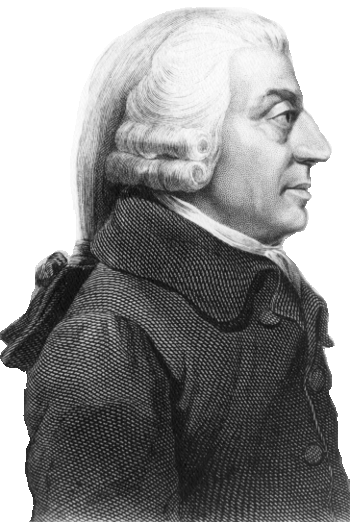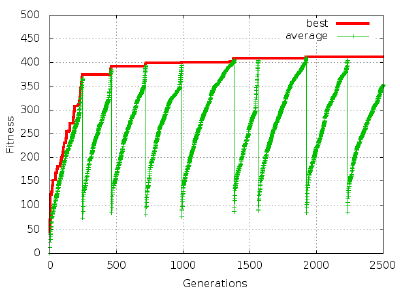Computed Science
August 29, 2011
No, this article isn't about
computer science. It's about
computed science.
Many years ago, I was in the audience of an interesting project review called by our
CTO. As we all know, CTOs have a very short
expiration date, and this meeting may explain why. We
scientists used to shudder whenever we would read an article about the "next killer technology" in the
Tuesday New York Times.[1] The Tuesday issue had a special science section, which in those days was a
newsprint-only affair. It was apparent to us that this was the journal of record for CTOs.
One of our most capable scientists gave a summary of his research project, which involved screening materials for a particularly useful property. This wasn't trial and error of the
Edisonian sort. The materials that he screened were selected by insights that he had gained over a long and successful career.
After his presentation, the CTO told him he could probably be replaced by an
expert system. Not surprisingly, this scientist chose to leave the company almost immediately, and he founded his own successful company.
Expert systems have had some success, especially in the area of
medical diagnosis.[2] That can be expected, since the thought process there is easily represented by a
flow chart; and the knowledge base, at least as it relates to patients, does not grow at too rapid a rate. The only nuance is how to effectively capture and implement the logical structure.
It's easy to think that humans can always be replaced by a computer. How many
automobiles are still
welded by humans, and not by machines?
Cellphones in their manufacture are nearly untouched by human hands.[3]
Professors use software to spot
plagiarism. Many tests are given by computer and automatically scored. Can the process of science be thus automated, as my CTO once thought?
Economics isn't what I would call a
"hard" science. There have been some contrived economics
experiments that involve study groups, and there have been some larger scale experiments in economics, via
government monetary policy changes, but economics really isn't an experimental science. What economics does have is a wealth of historical data that is useful for testing economic theories. In this way, it's ideal for
model building and simulation on computers.

Adam Smith, author of "An Inquiry into the Nature and Causes of the Wealth of Nations," which is usually referred to by the shorter name, "The Wealth of Nations."
This book, first published in 1776, argues that free market economies are more productive, and they benefit their societies more than others.
Etching based on an original 1787 depiction by James Tassie, via Wikimedia Commons)
Esmail Bonakdarian, a professor of Computing Sciences and Mathematics at
Franklin University,
Columbus, Ohio, utilized the
Glenn IBM 1350 Opteron cluster of the
Ohio Supercomputer Center in a study of evolutionary model building in economics.[4-5] The motivation, as explained by Bonakdarian relates to the crisis in many experimental fields in which scientists are swamped with data.
"Every day researchers are confronted by large sets of survey or experimental data and faced with the challenge of 'making sense' of this collection and turning it into useful knowledge... "This data usually consists of a series of observations over a number of dimensions, and the objective is to establish a relationship between the variable of interest and other variables, for purposes of prediction or exploration."
Evolutionary computation is offered as an alternative to simplistic
regression analysis. Regression may give useful answers for small problems, but large problems with many
independent variables do not lend themselves to simple models. That's where evolutionary computation can be used to search for optimal models. Scientists can then sort through these to find the ones that make the most sense. Unlike my expert system example at the head of this article, scientists are still gainfully employed.
For his study, Bonakdarian used evolutionary computation to study a classical economics problem that involves
public goods; that is, resources that are available to all without payment. The essential conflict involving public goods is that individuals can choose to take a free ride, or they can cooperate to benefit society at large. If no assumptions were made on the type of model that would explain his dataset, the 200 independent variables would allow 2
200, or 10
60, possible models.
The keyword in evolutionary computation is
fitness, and nearly every paper in this field has a plot of fitness as a function of the number of generations. Bonakdarian's study is no exception, and his fitness plot appears below. His work was presented at the
2011 International Conference of Genetic and Evolutionary Methods (Las Vegas, NV), and a preprint is available online.[5] Where else can you read a paper that mentions incest prevention?

Overall model fitness increases as subsets of a maximal model are tested. Progress is rapid, at first, but serious number-crunching is needed to reach an optimum.
(Via Ohio Supercomputer Center))
![]()
References:
- Brian Schwartz, "Why the New York Times Science Tuesday section is only eight pages and what to do about it," Abstract A14.00004 of the March, 2011, meeting of the American Physical Society.
- Edward H. Shortliffe, "Medical Expert Systems—Knowledge Tools for Physicians," West J Med., vol. 145, no. 6 (December, 1986), pp.830-839.
- Untouched by Human Hands, This Blog, January 25, 2011
- Evolutionary computation offers flexibility, insight, Ohio Supercomputer Center Press Release, August 2, 2011.
- Esmail Bonakdarian, "The Use of Evolutionary Algorithms in the Analysis of Economics Experiments," Preprint, Proceedings of the 2011 International Conference of Genetic and Evolutionary Methods (Las Vegas, NV)
Permanent Link to this article
Linked Keywords: Computer science; Chief Technology Officer; CTO; expiration date; scientist; Tuesday New York Times; newsprint; Edisonian; expert system; medical diagnosis; flow chart; automobile; welding; cellphone; professor; plagiarism; economics; hard and soft science; experiment; government monetary policy; model building and simulation; Adam Smith; An Inquiry into the Nature and Causes of the Wealth of Nations; Wikimedia Commons; Esmail Bonakdarian; Franklin University; Columbus, Ohio; Glenn IBM 1350 Opteron cluster; Ohio Supercomputer Center; Evolutionary computation; regression analysis; independent variable; public goods; fitness; 2011 International Conference of Genetic and Evolutionary Methods (Las Vegas, NV); Ohio Supercomputer Center).